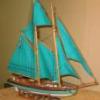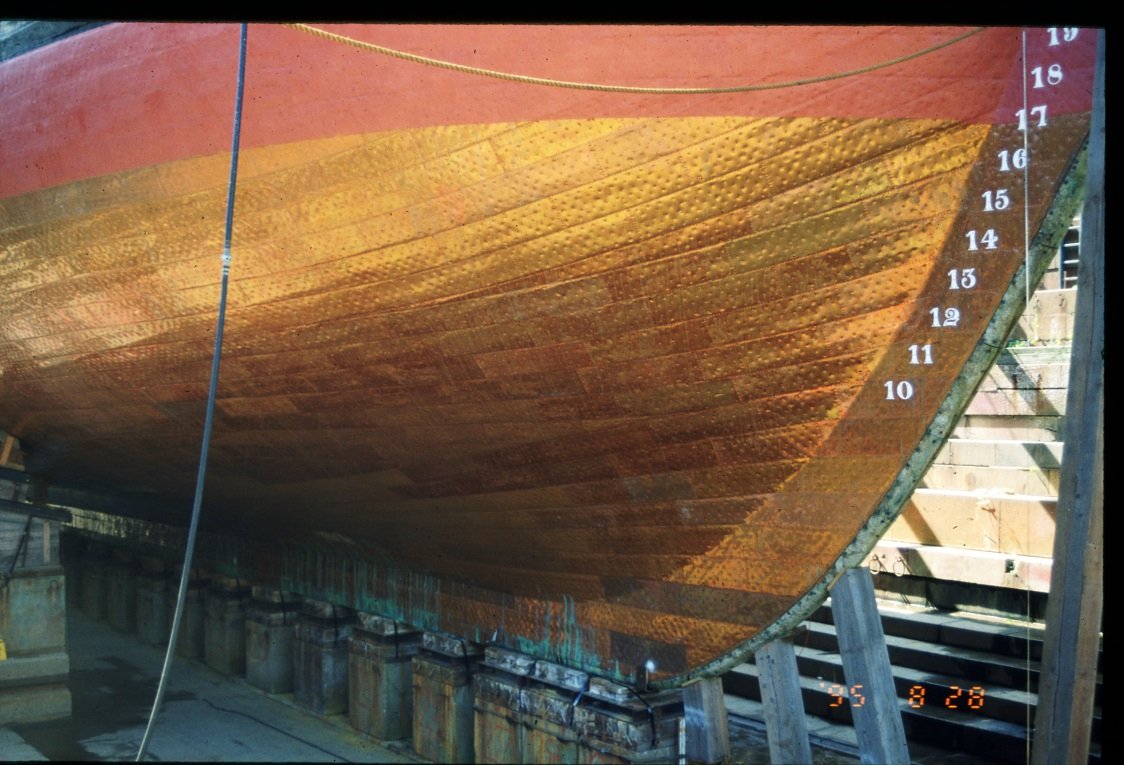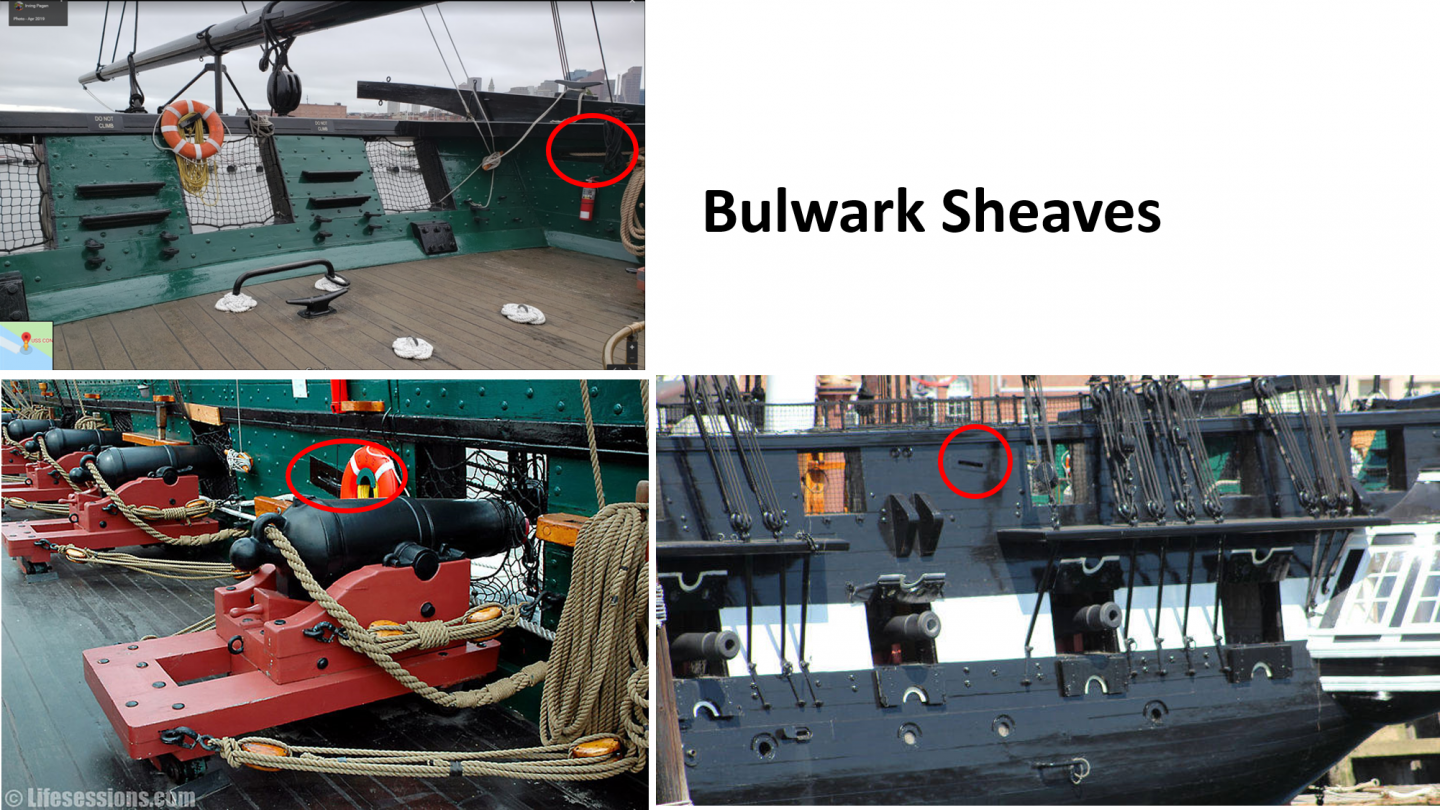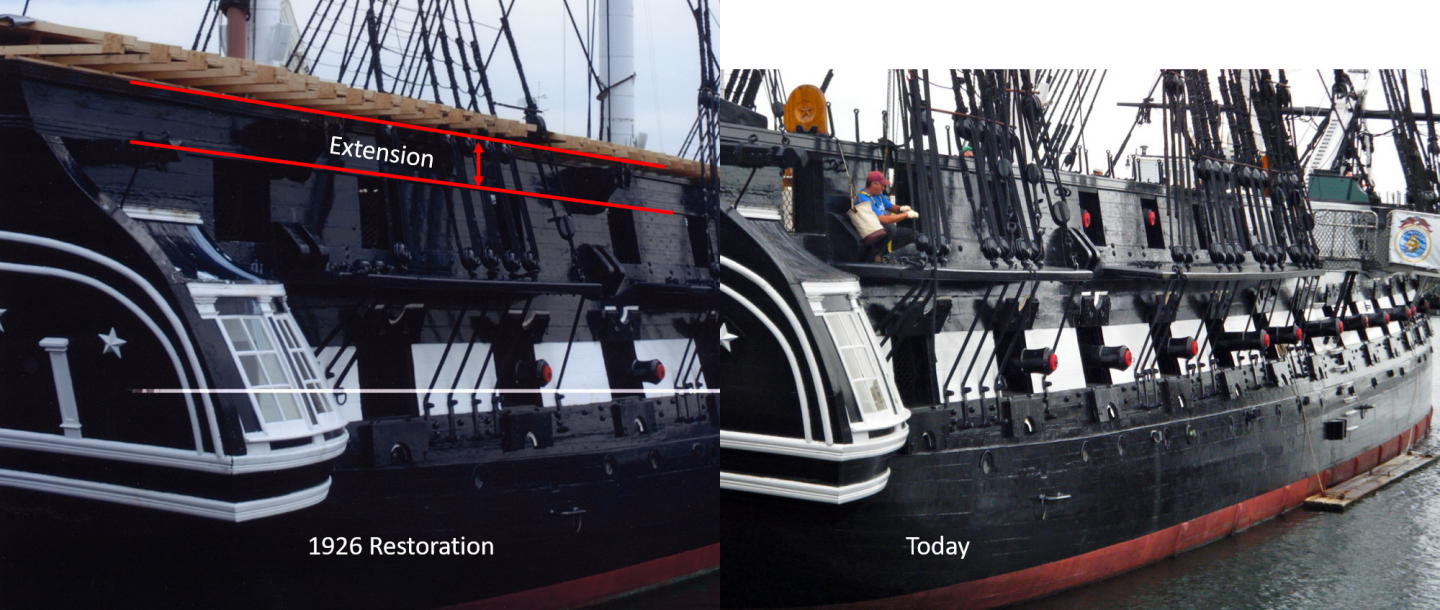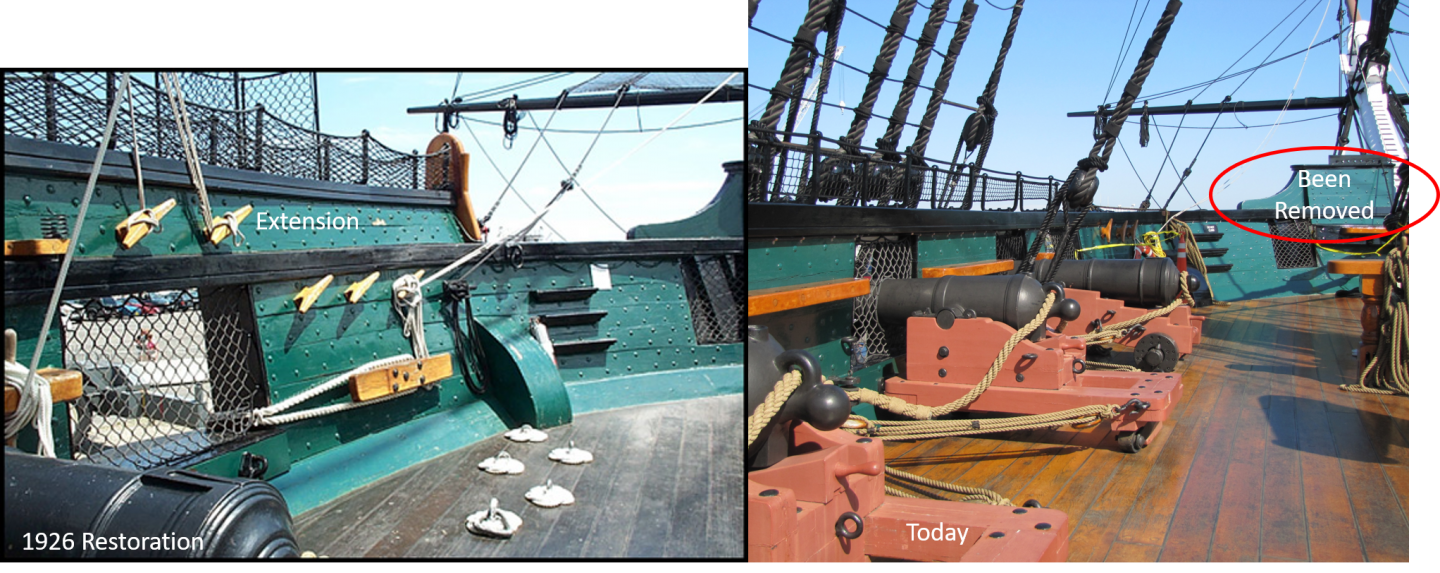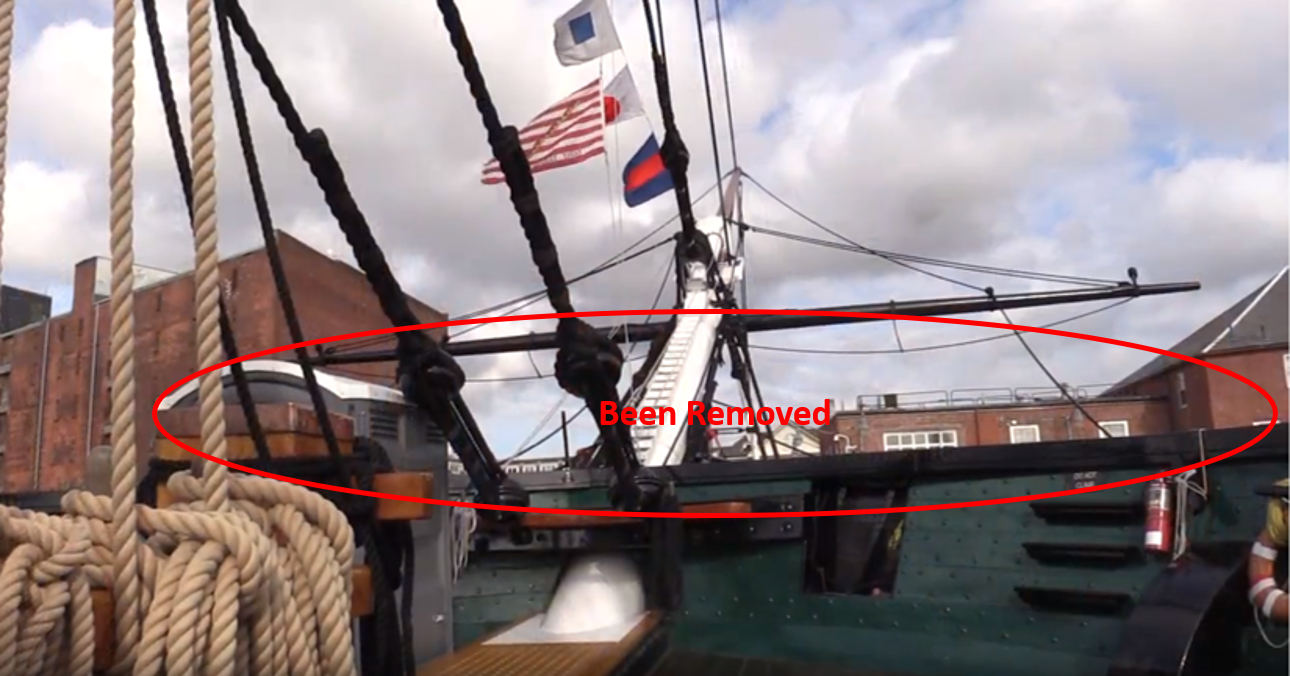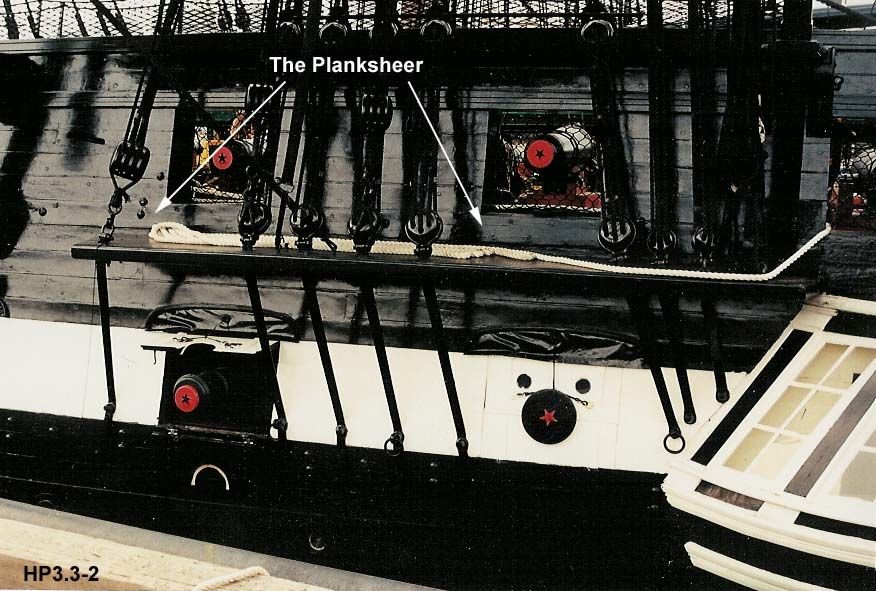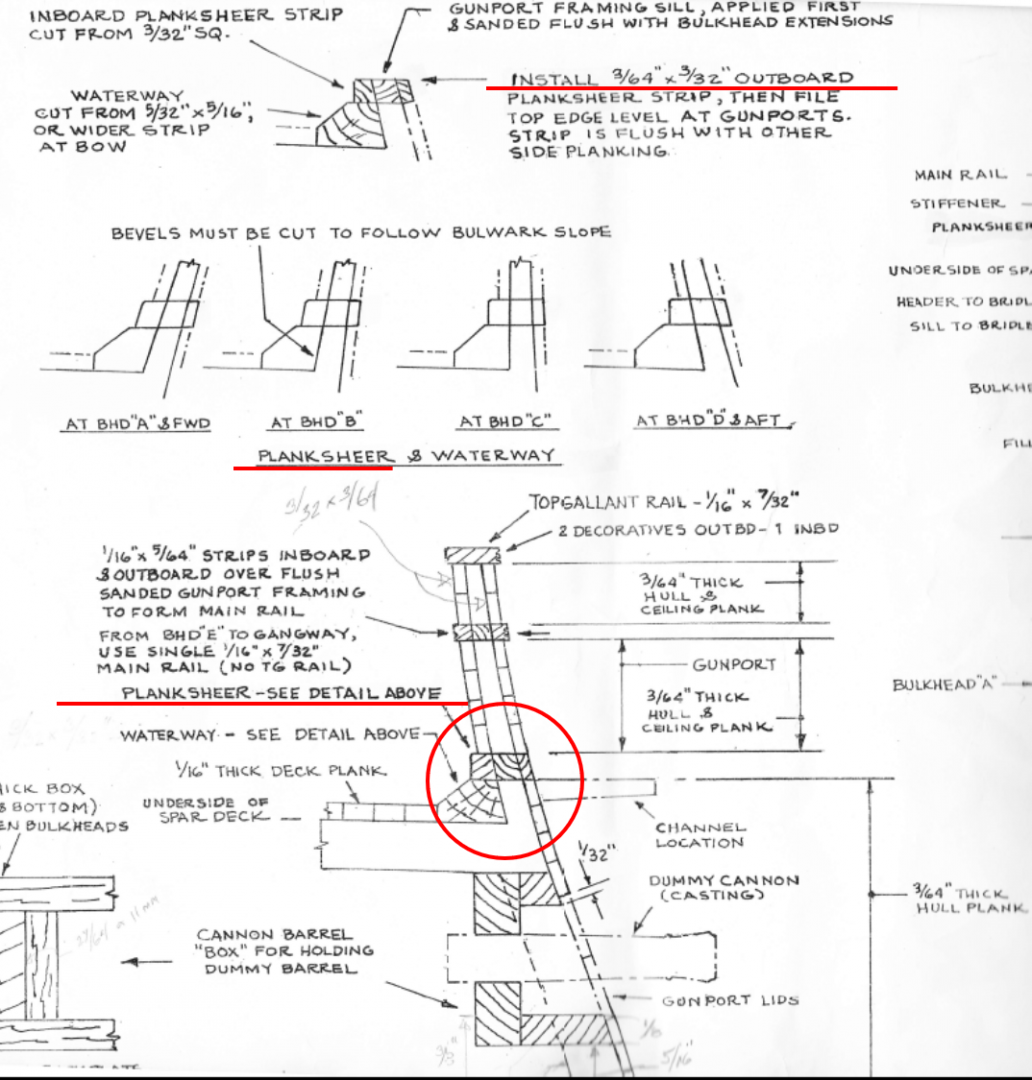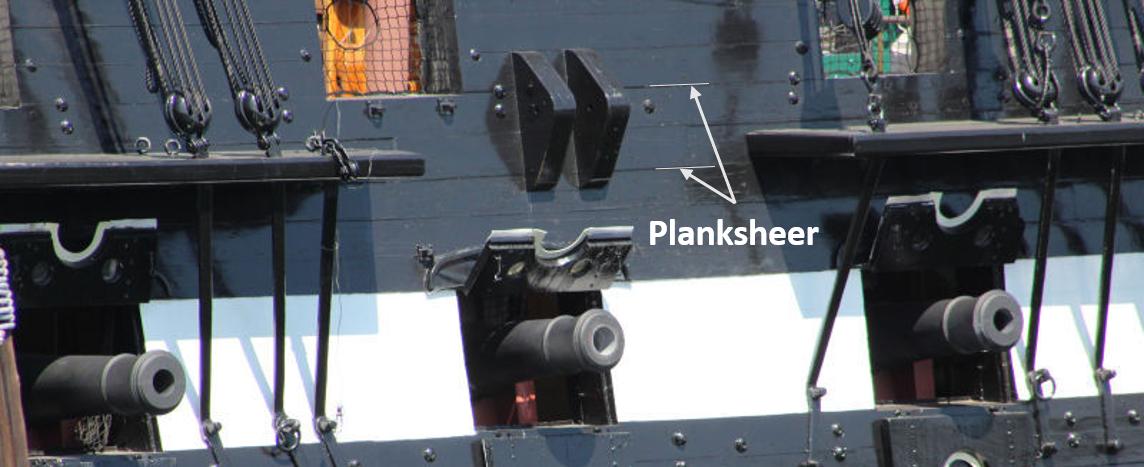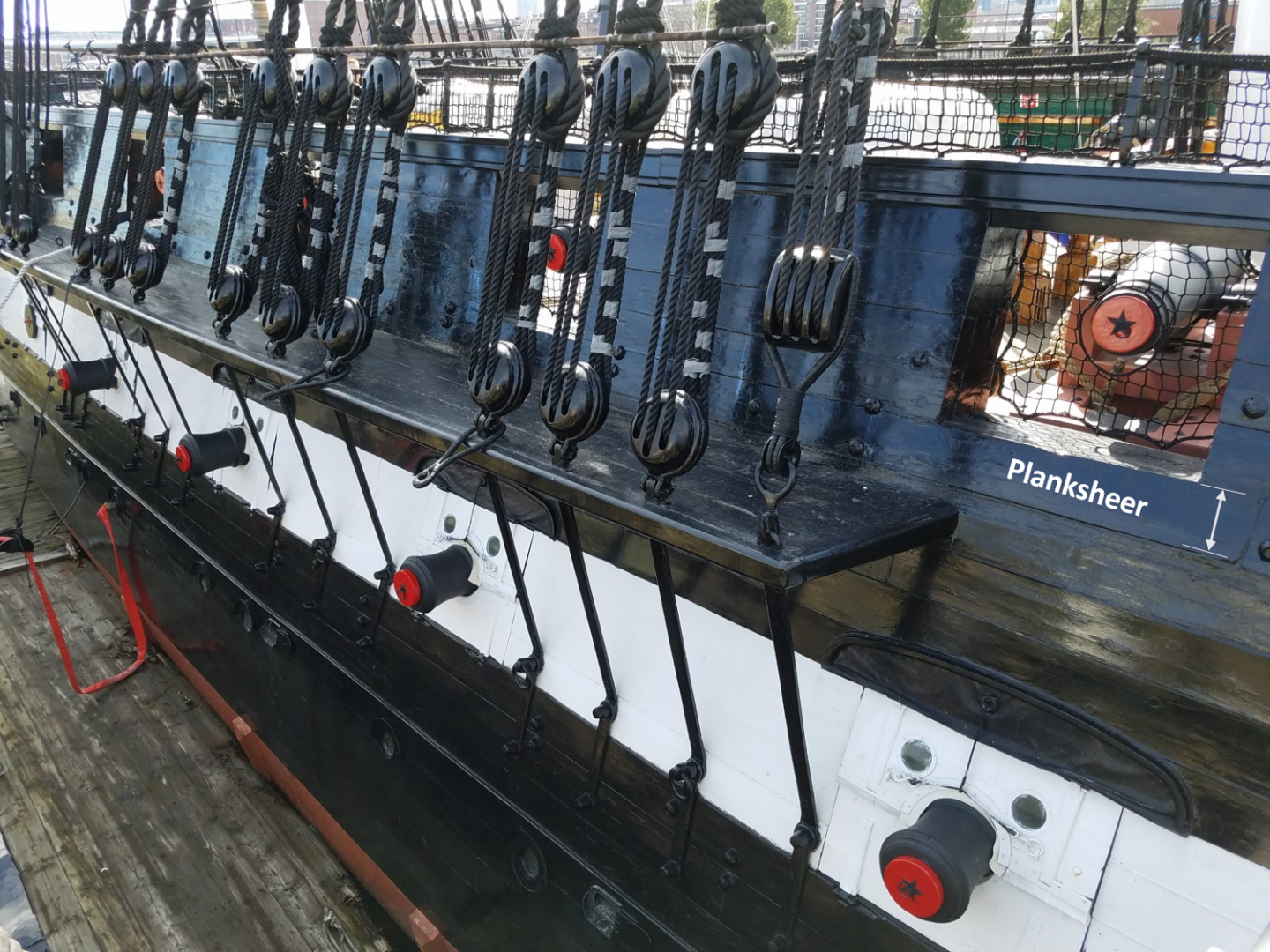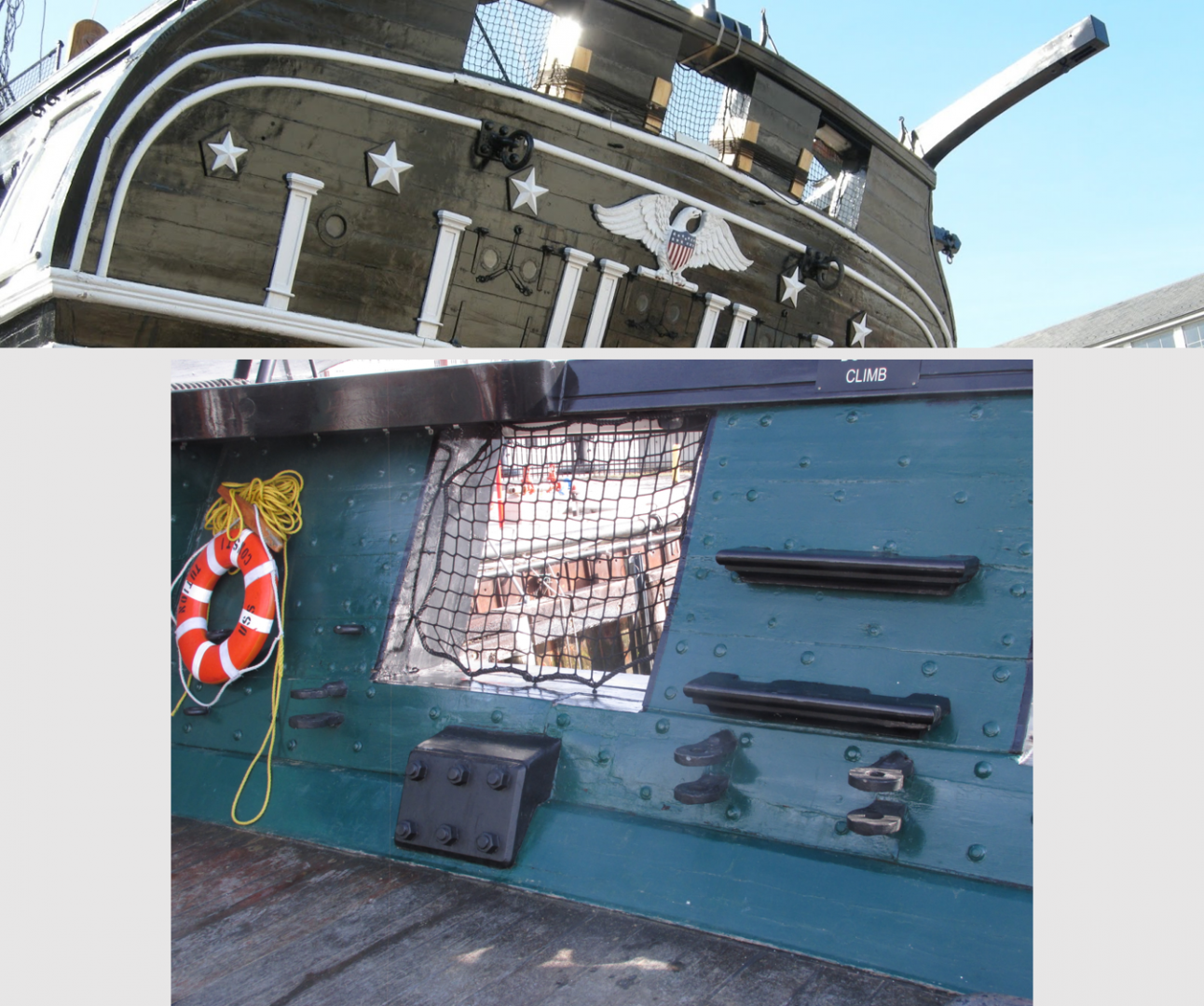-
Posts
2,523 -
Joined
-
Last visited
Content Type
Profiles
Forums
Gallery
Events
Everything posted by JSGerson
-
Very nice. I hope mine looks as good as your when I finally get to this point. I'm using Robert Hunt's practicum as a guide (as well as following numerous other builders) and he substituted boxwood for the fife rails because the basswood laser cut pieces were so delicate, you were also guaranteed to break them. When I purchased my kit, Hobby Mill was still in operation and they offered a wood supplement kit based on Mr. Hunt's laser cut parts substitutions in his practicum. So, I bought it and as a result I've always planned on replacing the parts you discovered the hard way. Look forward to your next posting. Jon
-
The first line of planking for the gun deck ports was started at the top of the ports with a line of planking resting on the jigs. Then three additional lines of planking were fitted above that so the were snug against the spar deck gun port planking. Next is planking in between the ports and just below them.
-
The build was put aside for a bit while I and my sister made a final trip to Florida to deal with the sale of my Mom’s condo and the disposition of her possessions. It was not something that I looked forward to, but it was done. We accomplished what was needed. After returning home and digesting the past events, I was ready to open the shipyard again. The next band of planking was the area of the gun deck ports. These are straight forward enough except that a 1/32” space must be provided around the gun port openings for the gun port lids. A simple jig was fashioned from the spacer block that was used to form the openings in the first place. A short piece was cut off and a second piece with the exact dimensions of the lid was made. The two were glued together so that when the jig was inserted into the gun port, it would create a void in the planking big enough for the lid to fit. It would also create a smooth border. Two were made.
-
It's been a while since I checked up on you. You do work under some adverse conditions. You might have saved some extra work/grief if you had contacted Model Expo. They have a no questions asked parts replacement policy. I'm sure they would replace any of the pre-cut wood you lost for what ever reason. What I don't know is their over seas postage policy. Jon
-
When I was contemplating how I would simulate the bolt heads, I did consider the "glue" method. But because I didn't have access to syringes (don't know if you can just walk into a drug store and just buy them or if you need a prescription) and I figured you would need a bunch of them as the glue eventually clogs them up, or a method to consistently create uniform thousands of drops, I chose not to do it that way. Also, I could adjust the position after placing them on the wood with Wipe-on Poly (before it dried). Your build looks great and you are moving a whole lot faster than me. Jon
-
You are right that a lot of modelers have gotten the representation of the fasteners of the copper plates wrong. They look like boiler plate rivets sticking out off the plates. As you can see from the image below, the plates are attached with copper nails which results in fine dimples on the plates. I am going to attempt to simulate the effect on my build using a stamp with fine needle points embedded in it. I managed to simulate the bolt heads on the bulwarks somewhat successfully (using 0.6 mm rivets I made using a fine punch) although I still feel the scale is off.
- 55 replies
-
- constitution
- model shipways
-
(and 1 more)
Tagged with:
-
I had read on someone’s blog (I’m sorry I forgot where) about different uses for miscellaneous deadeyes. I had been given a bunch of odd fittings including some deadeyes from a model train hobbyist friend of mine who had no use for them, so I tried to see if I could use a couple. Using two 5mm Mantua deadeyes, I sliced them into halves and sanded both sides of each of the four slices till they were 1/32” thick. Then using 1/32” plywood, two rectangular pieces were cut for each of the four deadeye slices. These were to become a sandwich 3/32” thick. The plywood was used because it was convenient and only the edges would be visible, and these would be painted. Two pieces of 1/32” x 1/32” stock were used for the sides of each sheave completed the housing. The housing interior and the edge facing the deck were painted black, and the parts glued together. There was no effort made for the pulleys to rotate because they didn’t need to.
-
It’s been about a month since my last post; I have had some highs and lows in that time. I’m still struggling with my left eye although I got the remainder of the stiches removed today– four in total. It’s slowly improving but up till today, I was just using my right eye. Now there is a marked improvement. We’ll “see” what the Doc says in two weeks. I made the effort to go to the NRG Conference in New Bedford MA (Oct 23-27), where I met old friends and generally had a good time despite some travel headaches, but that’s another story. However, on Nov 2, my Mom died at 101yrs. It was not unexpected but still it was a shock when it happened. My time was spent with my family and doing the things that needed to be done when there is a death in the family. Weeks later, things are slowly getting back to normal, but there are things that still need to be done, Thanksgiving is coming, and I’ll be with my sister for the holiday week. On the bright side I was able to get my mind on an even keel as it were, by working on the model. It puts my mind at ease. I was able plank the remainder of the hull between the side spar deck gun ports. You may also notice that I have trimmed the bulkhead extensions that stick up above where the cap rail will go. They extended to support the Topgallant Rail. This was the “Cap Rail” of the added hull and bulwarks on top of the actual Cap Rail. This extension was added in 1926 and subsequently removed in later restorations. Since my model is trying to reflect what the ship looks like today, it will not be built as shown in the kit plans which is based on the 1926 restoration.
-
My left eye still is not up to par although I’ve improved a bit. My eyesight went from 20-400 to 20-200. But the call of the shipyard was strong so I’m at it again albeit proceeding with caution. I still have 4 stitches to be removed after I get back from NRG Conference. I’ve managed to install the planksheer without too much effort and added the first transom extensions for the quarter galleys’
-
Well I wasn’t “shown otherwise” but a comment made by another builder made me realize I interpreted Mr. Hunt’s terminology wrong. When he stated “the planksheer on the outside to be thicker than the other planking” I interpreted the term “thicker” to mean thickness of the plank, expecting the planksheer to be proud of the hull like the wale. He was using the term to mean the width of the plank which, after I realized that, was definitely shown on the plans as wider. Still no actual work on the model as my left eye still does not see well after cataract surgery which it definitely needed. A day after the surgery (Oct 1) I could barely make out the big letter “E” on the eye chart. My cornea clouded up due to the non-routine procedure that was required. It might be a month before the eye settles down.
-
Planksheer I thought it might be a good time to finish up the gun ports. This meant that I would now have to plank the hull from the gun deck to the cap rail, so I went back to the Robert Hunt practicum for some guidance. He started with the planksheer. First thing he stated was that the planksheer was “slightly thicker than the planks above” the planksheer. He also stated “…if you look at sheet 3 of your plans, Hull Planking Layout, it also clearly shows the planksheer on the outside to be thicker than the other planking.” He provided a photograph to illustrated it. Now I may need cataract surgery, but I’m not blind…yet. For the life of me, I could not find on the plans where the planksheer is shown or indicated as being thicker. The image he provided (HP3.3-2), as near as I could determine, did not provide proof of the extra thickness at least to me. I even checked all my reference images and rechecked the images online. They all confirmed my observations, the planksheer is no thicker than the other planks. Shown below is the referenced plan, Mr. Hunt’s photo, and my two photos.
-
One of the odds and ends I mentioned earlier are the two “backing plates” for the “towing bridle ring bolts” located just below the two outer port openings in the transom. The other item I decided to wait on are the four hull sheaves. Those will be done once the hull planking installed around the gun ports. As a matter of note, I had planned to have cataract surgery this coming January, but my left eye got bad very quickly, and by quickly, changing daily. So, I will be having the surgery for the left eye Oct 1 and the other eye hopefully two weeks later. This of course will slow me down juusssst a bit (not that you will notice from my normal lightning pace) in my build.
-
Just discovered your build and it looks great. I too am using Mr. Hunt's practicum, as it is a valuable resource. I could not have built my first square rigged ship, Rattlesnake without it. Just be aware that he is not infallible, he makes mistakes, and he does simplify some of the detail which may or may not be to your liking. In my Connie build, I am using his practicum as a guide and not the bible as I did with the Rattlesnake. That's partially because I am adding as much detail as I can to the gun deck which he, and the Shipway instructions covered up with a fully planked spar deck. I use a lot of reference photos of the actual ship to guide me and I assume you will too. The Shipway kit is based on the 1926 restoration which NOT how the ship looks today. So make sure when you are looking at a photo, it is reflecting the proper time frame of your model. A good example of this is the topgallant rail. It was installed in 1926 but has been subsequently removed. I look forward to seeing future installments of your build log. Jon
- 55 replies
-
- constitution
- model shipways
-
(and 1 more)
Tagged with:
-
Once that was completed, the transom bulwark panels were constructed, and the pseudo bolt heads were added. At this point, all the bulwark panels were painted green like those forward. Finally, I fabricated two small wooden transom cleats and four transom bulwark steps. Once I painted all the bulwark panels green and the transom steps black, the remaining cleats and steps were installed. This left the cannonade rigging eyebolts to be installed. Those eyebolts which I could install onto the bulwark panels was done, which left 66 or so odd eyebolts need to be stalled just below the gun port openings on the planks just above the waterways, plus about 14 double eyebots.
-
After a few personal activities including another trip to Florida with my sister to visit Mom for two weeks, the shipyard finally opened again. I swear, my Mom saves all the “honey do’s” to happen when we arrive. We weren’t inside her condo for more than 5 minutes when the land line phone went dead as well as the internet (both supplied by AT&T). {Note: because she is 101, we wanted to ensure that we could communicate with her should the power go out. The landline is the simple analog type which supplies its own power. Cell phones need power to recharge. So, the irony is obvious.] That took a couple of days to fix as they had to dig up the line and replace it. Other things like simply changing a fluorescent tube in the kitchen got more complicated when I discovered that I had to replace the ballast unit as well. Just a typical trip. Then there was the worry about her while Hurricane Dorian park over the Bahamas. The initial forecast had the storm track going right over her home. Luckily that didn’t happen; she didn’t even lose power. Back to the shipyard, I wanted to finally add the bolt heads to the transom bulwarks. This required that I first build the framework for the stern windows and ports for the gun and spar decks. This took a couple of tries as it required critical precise measurements. It may not look precise, but the ports and windows are measured from the center line. All the structural elements will be covered by the bulwarks and planking.
-
All sound reasons, not that you need any when picking a model. If it's something you like, build it. I've thought about maybe a Lobster boat or a tug boat in the far distant future when my USS Constitution is completed. As for a display case build log, that would be of general interest to many, A number of builders include this as part of the main build log. I did with mine even though most of it was purchased.
- 57 replies
-
- rattlesnake
- model shipways
-
(and 1 more)
Tagged with:
-
A nice change of pace. Any particular reason for the PT choice? Are you going to make your display case or go the route I took, buying the case and table? My choice was easy, I have no woodworking tools (hand or power), save for my modeling tools, and I have absolutely no experience in making furniture.
- 57 replies
-
- rattlesnake
- model shipways
-
(and 1 more)
Tagged with:
-
It took me 7 years to build the Rattlesnake. I didn't think anyone would take longer to build this model than me, but you did at 8 years and it was well worth the wait. Congratulations!! Since you have invested so much time in creating this beauty, how are you going to display and protect her? And, are you going to take a breather?...build another model?...or what? If, and when you plan your next project. I look forward to your next build log. Well Done!! Jon
- 57 replies
-
- rattlesnake
- model shipways
-
(and 1 more)
Tagged with:
About us
Modelshipworld - Advancing Ship Modeling through Research
SSL Secured
Your security is important for us so this Website is SSL-Secured
NRG Mailing Address
Nautical Research Guild
237 South Lincoln Street
Westmont IL, 60559-1917
Model Ship World ® and the MSW logo are Registered Trademarks, and belong to the Nautical Research Guild (United States Patent and Trademark Office: No. 6,929,264 & No. 6,929,274, registered Dec. 20, 2022)
Helpful Links
About the NRG
If you enjoy building ship models that are historically accurate as well as beautiful, then The Nautical Research Guild (NRG) is just right for you.
The Guild is a non-profit educational organization whose mission is to “Advance Ship Modeling Through Research”. We provide support to our members in their efforts to raise the quality of their model ships.
The Nautical Research Guild has published our world-renowned quarterly magazine, The Nautical Research Journal, since 1955. The pages of the Journal are full of articles by accomplished ship modelers who show you how they create those exquisite details on their models, and by maritime historians who show you the correct details to build. The Journal is available in both print and digital editions. Go to the NRG web site (www.thenrg.org) to download a complimentary digital copy of the Journal. The NRG also publishes plan sets, books and compilations of back issues of the Journal and the former Ships in Scale and Model Ship Builder magazines.


